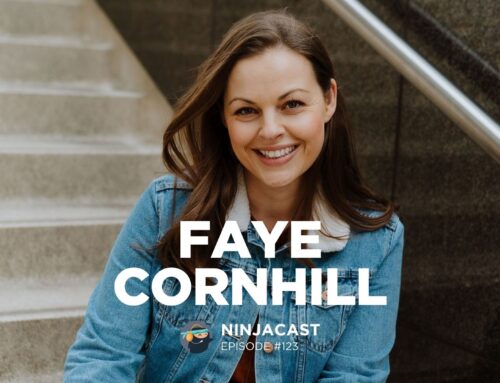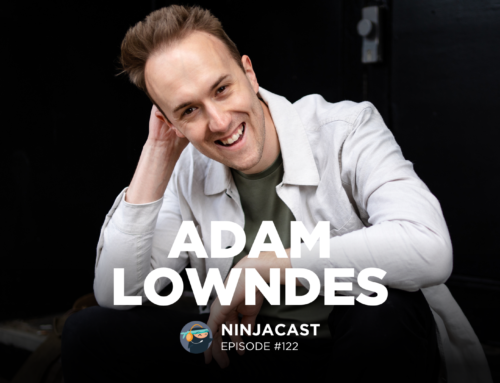048: Kirstie McConnell – Pet Photography Best Kept Secrets & Why You Should Add It To Your Offering
December 20, 2021
“You’re going to get dirty, you’re going to get your gear broken, you’re going to get bruises because dogs do jump on you – be prepared and you’ll be fine.”
KIRSTIE MCCONNELL
Hey everyone! It’s Sally here, from Studio Ninja. Today’s episode is all about Kirstie McConnell!
Check out some of the biggest points from Kirstie’s interview below:
How can photographers start out in Pet Photography?
So the first thing that I would recommend is that you practice with just dogs to begin. Don’t try to do sessions with dogs and kids, and even dogs and adults. It’s a lot to try to comprehend at the same time. In the beginning, you’re trying to just understand how different dogs will react. You will have some dogs that will be scared of the shutter, the release of the shutter noise. You’ll have others that are scared of the lens if you’re using a 7,200, for example, or even a 35. You’ll have other dogs, as you mentioned, that are anxious. These are all things you will come across, so what I would recommend is that you start by practicing. That’s what I did, that’s what most pet photographers that I know did. Just like anything, if I started photographing newborns, I would have to do a bunch of portfolio sessions first because I don’t know how to photograph a newborn. I’m a fabulous pet photographer. I will take that, but give me a baby and it will look terrible.
I know what I know and that’s the same with the listener too. So definitely start off by building a folio and practicing, and I think it’s really, unless you are confident from the beginning, I would say it’s unfair to charge a client from that in the beginning because you’re probably not going to get deliverable work yet. So what I would do instead is I would kill two birds with one stone. So I would approach, and ideally in fact, a local rescue or a shelter, if you’re in the US and ask them if they need some help. Volunteer your time, because that’s giving you your easy access to as many dogs as you need, or cats so you can practice. They will all have different things going on with them, so all the things that you’re going to come across with your client’s dogs, you’ll find nervous dogs, anxious dogs, all the things with rescues as well. So that’s a great place.
And then the bonus there is that you’re also forming a really good relationship with your rescue, which can help you later on when you’re ready to launch a marketing campaign and you might want to work with them on that. We do lots of fundraising marketing campaigns as pet photographers, and so to start establishing a relationship from the beginning because you’re volunteering your time would be my highest recommendations. Start there. When it comes to when you’re feeling more confident then, then you can start practicing by bringing, you can start charging and then you can bring people into your shoots and eventually add kids as well, because that is obviously the most challenging.
The other tip would be, don’t be afraid to photograph the dog on lead. Most of us do that. My portfolio is pretty hard to find these days because Bitsa Bernard Photography doesn’t exist, but even if you look through the Pet Photographer’s Club Instagram, our members from all around the world are sharing their images through there and I’d be very surprised if you could actually pick which images were on lead and which were not, and I can probably say that at least 80% would be on lead. So we do photograph on lead and then we retouch it out obviously, or send it to a retoucher.
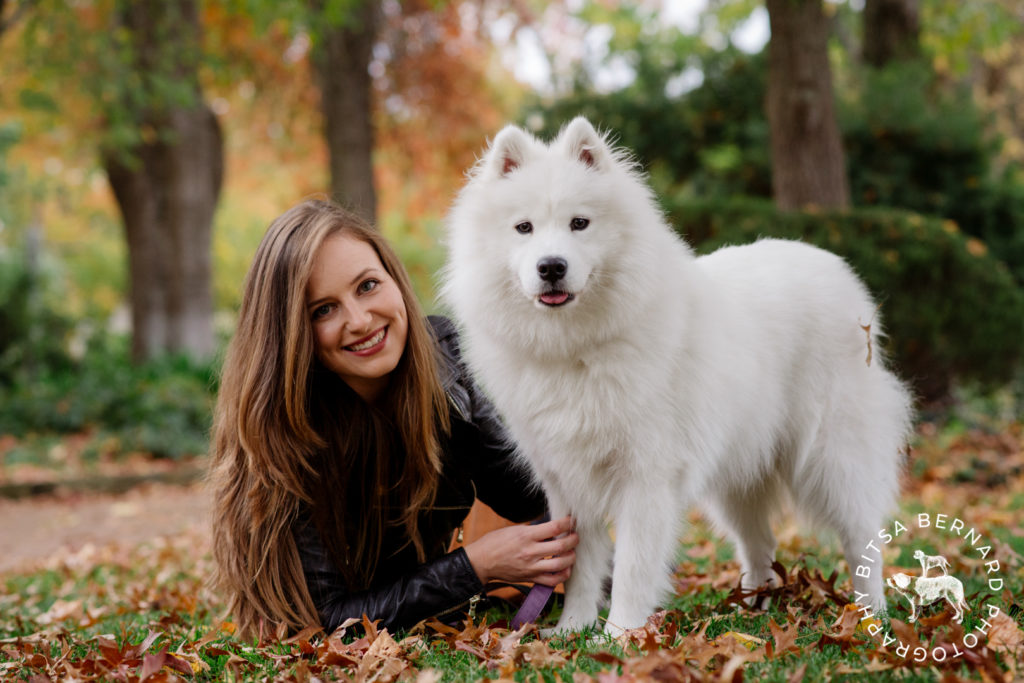
What are your top tips for arriving on location to shoot a dog?
That’s a very good question, actually. Yes. I ignore them completely.
And this is Dog Behavior 101, by the way. So this is a tip for everybody in life. If you see a dog down in town somewhere and you instinctively want to go over and be like, “Oh, hi puppy,” just don’t. The dog probably doesn’t like that. I mean, would you like it if I came straight up to you and started rubbing your head and said, “Hey,” in your face? The dog is the same. So yeah, with the shoot I take that into a shoot as well. I arrive, I ignore the dog, I turn to the client and don’t get too close to the client because often the dog is on the lead and dogs don’t like somebody stepping between them and their owner or their person. So yeah, I stay a meter and a half or two meters back.
I turn to the client. I say, “I am excited to meet your dog. I just don’t want to overwhelm them right now, and so I’m going to wait until he or she comes to me, and then we’re good to go.” And then that’s what happens. You wait until they come to you. Some dogs, you will have to move very slowly if they’re super anxious, that’s okay. Other dogs will be jumping up on you and then you can respond the same way. But again, it comes down to having a basic understanding of dog behavior. I’m not saying you have to be a trainer by any stretch of the imagination, but just paying attention. Even when you’re doing your portfolio shots, how do dogs react? If they’re jumping up on me all excited and I scream back in excitement, what happens then? I bet you see that they go even more excited or they flip and they go the other way. So start paying attention as part of your training, as you’re doing your portfolio building, how the dogs respond. So yeah, definitely ignoring them.
The other tip is to make sure you set yourself, sorry, to make sure that you’re setting yourself up for success in that photo shoot is to deliver the right information to the client at the right time. Just like with any other shoot. So I would make sure in your confirmation email, or however you send, if you send a welcome pack, whatever you do that you do give all the tips like you would normally for a portrait shoot, what to wear, what not to wear, et cetera. I mean let the client know they’re going to get dirty, but also in there you should, or I would recommend that you also suggest that the client doesn’t bring their own treats to the shoot, and if they’re going to do that, leave them in the car as a backup option, and if they’re going to bring any toys or things that make the dog happy or excited, can they keep them in a bag and keep them away until the very end of the shoot when I ask for them to come out?
Because that way, and I always have that conversation on the phone and I explain why, basically I don’t want the dog focused on the person, their own person the whole time, I want them focused on me and listening to me during that hour or 40 minutes or two hours, depending how long your shoot is, during that time I’m the boss. I’m the one I want the dog to listen to and the treat master is king.
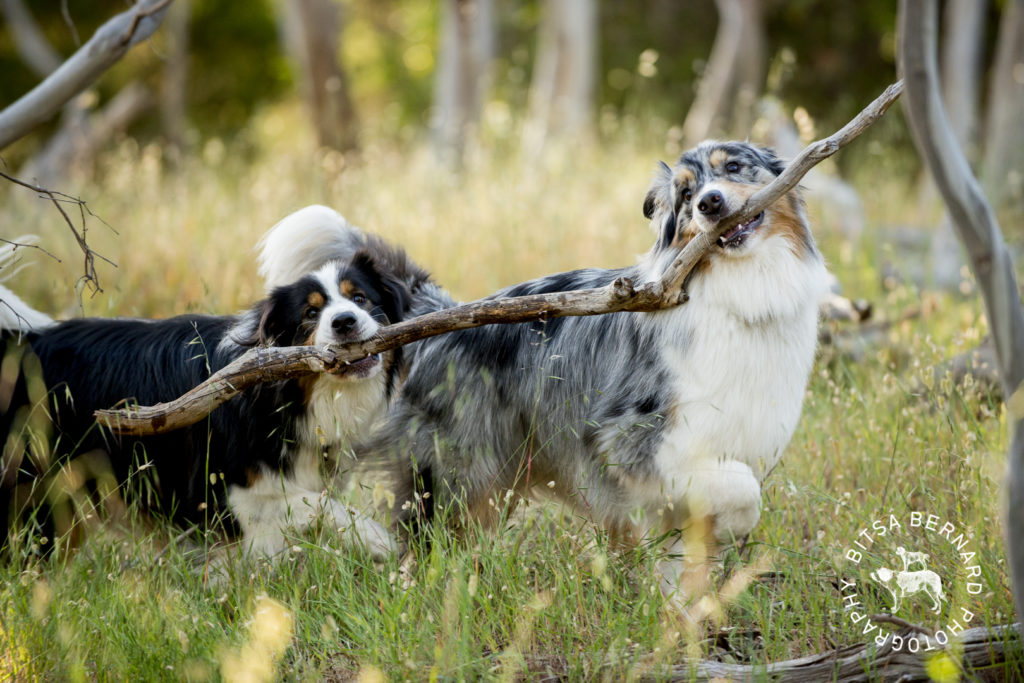
How can photographers really put a good marketing strategy in place to make sure that they are actually attracting clients?
This is my jam. I’m pretty big on that. I think it’s the downfall of most photographers, that’s where we struggle across the board. You probably see that too, that you can be the best photographer in the world, but if nobody knows you exist, you’re not going to have any clients. So your marketing plan, just like with weddings, just like with portraits, with anything else, newborns, et cetera, it needs to be consistent. You need to have a 12-month marketing plan and actually implement the steps. Have some passive marketing going on in the background to help build trust. So things I would recommend would be like a lead magnet on your website and then an email nurture series. You guys already do that for your weddings probably, or it’s on your to-do list, and I would have something in that like my top 10 pet-friendly cafes in my city, something like this, that a pet owner wants to download. And then obviously the email nurture series would be just like in anything else, showing your expertise. So this is something I would recommend.
For an active marketing, going to places where your clients are. So nowadays in most places, in developed countries at least, there are lots of pet-friendly events, sorry, happening. So one of the best events that I went to was the RSPCA hosted a Pets at the Pub event once a month or every two months, it changed year to year. And basically I had a very good relationship with our RSPCA, so those of you that are not in Australia, we have similar things in different parts of the world, but basically you’re looking for your national body for animal welfare as well as they often also do rescues and have a shelter. So anything like that, any kind of animal-related charity. So they hosted this event, basically there was no cover charge, people could just go to the event and take their dog, and a portion of the beer sales went to the charity.
So I already had a very good relationship with our RSPCA because I already donated my time over all the years, just going back to your portfolio building now, right? So you have to think a little bit ahead. And so I called Kate who was in charge of marketing. I said, “Kate, I saw you’re having this event. Can I come?” “Yeah. What do you want to do?” “Well, I was thinking,” and we back and forth some ideas. And originally she asked me if I would be a floating photographer. I was like, “Yeah, maybe, but doesn’t really reflect my work.” And so in the end I set up a table at the entrance and took a raffle basically, was, “Look, there’s no cover charge to enter, but if you want to donate $5 instead, you’re going into this raffle, you can win a photo shoot with me.”
And the whole display behind me was all my samples, just like any expo. I was collecting all of these details. People were happy because they were giving five bucks that went directly to the charity that they were there to support, and I got a great mailing list out of it. It was fantastic because the kind of person that takes time out of their week to go to an event, especially because it’s a fundraiser for the charity they care about and the exciting part, they can take their dog and they’re going to meet other people, they’re your client, right? They’re the people that are usually, we call it, I think you use it in every part of photography actually, double income, no kids.
Yeah. And that’s them, that’s pretty much who’s at this kind of event. So that was one of my best ones. Then I did the normal giveaway thing. One person won a major thing, it was a probably wall art collection and a photo shoot and everybody else had a free shoot offered to them or whatever, system changed each time. The point is, be where your clients are. So that’s where mine were. They don’t have to be just at dog events though. They can be other places. So keep an ear to the ground, pay attention, ask your clients questions once you start getting clients to see where you can find them.
The other thing that works really well, if you’re not into events, is doing a calendar project or a book project. Works very well with pets. So again, my very first marketing campaign was with my local charity in my hometown and we put a calendar together. So I drafted a letter, they sent it to everybody that had ever adopted a pet from them, because they were a pretty new organization, and invited them to be part of this calendar project. They had to pay, maybe half of what they paid went to the charity, the other half went to me. I did all the shoots, I put the calendar together, I printed the calendar. So basically I made it easy for the,. But then I made money off the sales.
Now to kickstart your pet photography offering, great way because you’ve just had how many people receive your letter with your name on it and your branding, even if they don’t get involved in that particular project or campaign, people now know pet photography exists. So when they are ready, they’ll come looking for you. So collaborating is a really, really great way to get started.
And then there’s all the other traditional marketing that you would use in any other genre as well, Facebook, Google, Google Ads not as much because if you have a look, people don’t actually search dog photography. And if they do, there’s probably only 10 in your city and so they’re going to find you, but yeah, definitely events, collaborations, projects, mini sessions, limited edition. All of these things work really well. The thing to keep in mind is that there is no event, it’s not like newborn photography or wedding photography where you either get a photographer for that time of your life or you miss out, it’s more like family photography or boudoir where you have to give people a reason to book now. So you always have to have something going on, or a very strong passive marketing system basically.
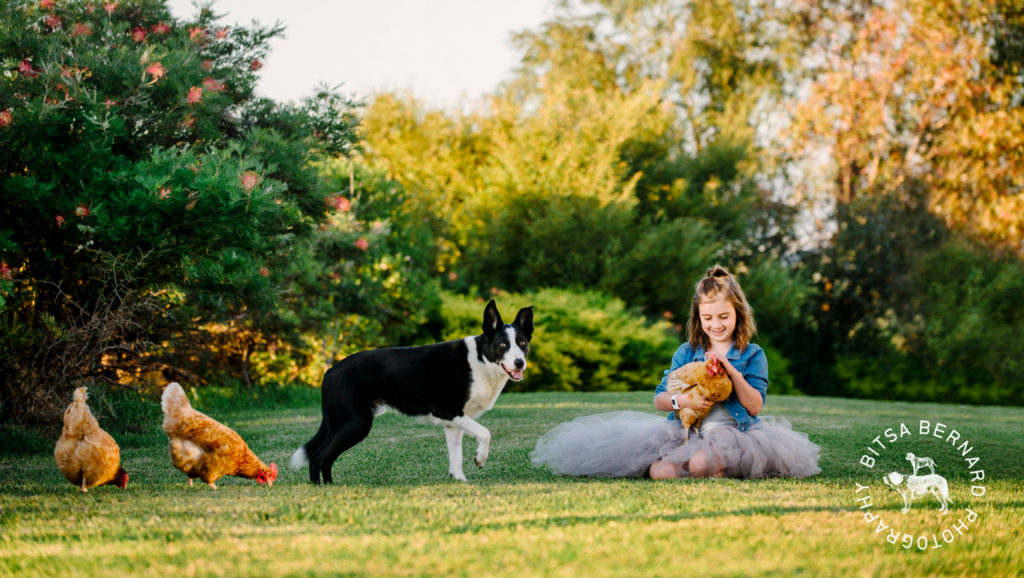
Thank you!
Thanks again to you all for joining us and a huge thanks to Kirstie for joining us on the show!
If you have any suggestions, comments or questions about this episode, please be sure to leave them below in the comment section of this post, and if you liked the episode, please share it using the social media buttons you see at the bottom of the post!
That’s it for me this week, I hope you all enjoyed this episode.
See you soon,
Sally

About Kirstie McConnell
Kirstie McConnell is an internationally respected photographer, and co-founder of the The Pet Photographers Club with Caitlin McColl. The Pet Photographers Club is the go-to platform for both established and aspiring pet photographers to grow their business. They have a weekly podcast, organise the International Pet Photographer of the Year Awards, host workshops, courses, and the Virtual Pet Photographers Conference, put out free resources and bring the community together through their mastermind group and other events.


